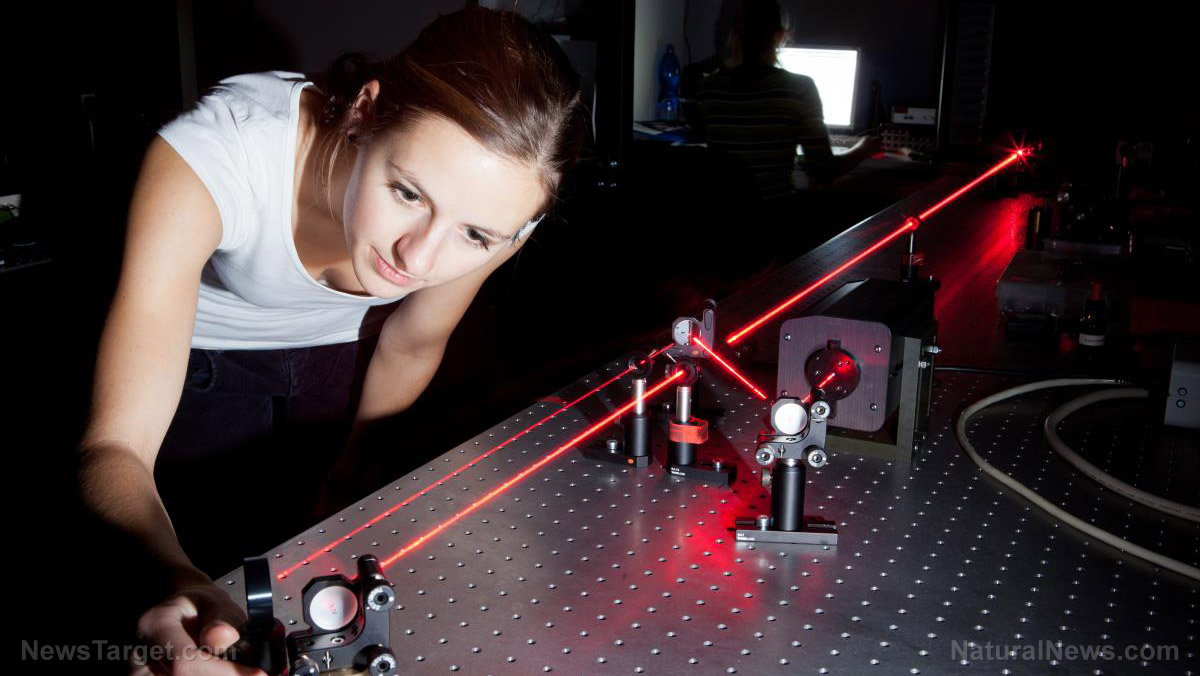New form of laser that can work in room temperature holds potential for space industry, quantum technologies
05/23/2018 / By David Williams

Lasers were invented at pretty much the exact same time as masers, but you don’t hear much about the latter nowadays. That’s because lasers became the worldwide standard for all sorts of industrial applications, while masers were simply far too impractical to be used in the real world. But now a group of researchers have figured out a way to make them usable in certain applications. And with some work, they could eventually enable their use in places where even lasers aren’t that helpful.
Masers were invented by the same scientist who invited lasers, but the technology behind them was shelved when it was proven to be ineffective outside of super cold-temperature environments or outside of a vacuum. Although the maser served some uses in certain fields such as in amplifying faint signals coming from deep space, it didn’t take long for the more practical laser to fully take over its duties.
Now a new way of generating them has been discovered thanks to the use of diamonds, making them usable at room temperature and potentially opening the door to a ton of different possibilities. (Related: Maser inventor Charles Townes to receive Templeton Prize award.)
Based on online reports, physicists at Imperial College London were able to produce what was deemed to be a continuous maser beam outside of special environments and in room-temperature conditions. They did so by shining a laser light right through a diamond, sapphire, and copper apparatus which allowed them to create the microwave emission necessary for the maser to materialize.
It is said that the sensitivity of existing microwave amplifiers were quite limited due to the background noise. But thanks to the new method used by the physicists, they were able to push the noise of the amplifiers down while allowing them to operate at room temperate at the exact same time. This is according to David Awschalom, a physicist at the University of Chicago in Illinois, who did not play a part in the research. “This work is very exciting,” he added.
The details of the research were recently published in the journal Nature, building on a system made in 2012 by members of the same research team. In their earlier work, the team was able to create masers at room temperature but only in the form of maser pulses. Now, they rectified this issue by replacing one key component of their setup called the gain medium. Whereas their old device used an organic molecule called pentacene, which degraded through use, the new one contained a tiny diamond that was created under special conditions. This proved to be much more stable and produced non-stop radiation.
Fully-working masers could be used to improve current space operations by amplifying signals as well as radiation while adding little noise, making them useful for long distance communications. What’s more, they could open up a new field of study through “quantum diamond technology,” said one of the researchers. Since their maser discovery is still so new and is only a proof of concept as of this time’s writing, there’s no telling where exactly it could end up. One thing is for sure, it could advance research on laser beams a great deal if used in the right kind of application.
Read more about interesting science discoveries in Scientific.news.
Sources include:
Tagged Under: diamonds, discoveries, future tech, Laser, light, long-distance communications, maser, maser beams, maser pulses, microwave, microwave amplifiers, microwave emission, microwave laser, progress, quantum diamond technology, quantum tech, research, science, Space, space operations, visible light




















